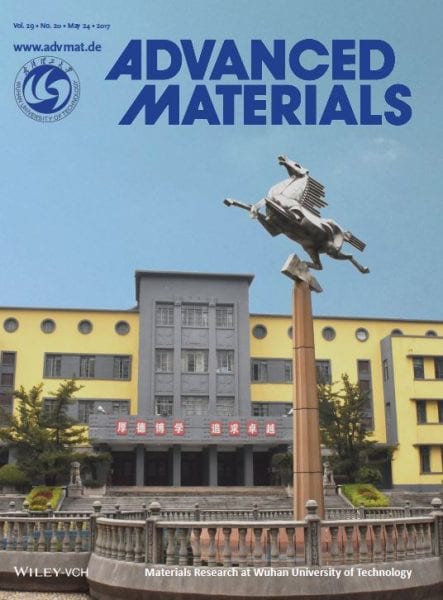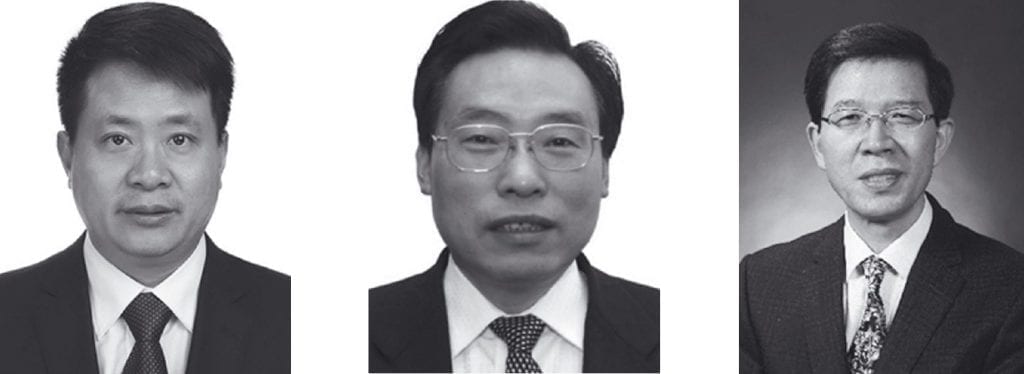
The front cover of the issue
Wuhan University of Technology, or WUT, is located in Wuhan, a famous “River City” in China, and the largest city in Central China. As it is now, WUT was formed in 2010, as a merger of the former Wuhan University of Technology (est. 1948), Wuhan Transportation University (est. 1946) and Wuhan Automotive Polytechnic University (est. 1958) .
Issue 20/2017 of Advanced Materials brings together a collection of review-type articles to highlight materials research at Wuhan University of Technology to celebrate the 30th anniversary of the State Key Laboratory of Advanced Technology for Materials Synthesis and Processing (ATMSP) and the first anniversary of the International School of Materials Science and Engineering (ISMSE) at WUT. It is also dedicated to the memory of Runzhan Yuan, who co-founded the State Key Laboratory of ATMSP, on the 10th anniversary of his death.
The issue was guest-edited by Liqiang Mai, the Cheung Kong Scholar Chair Professor at WUT, Qingjie Zhang, director of the State Key Laboratory of ATMSP, and Ce-Wen Nan, a professor in the School of Materials and Engineering at Tsinghua University, who worked at WUT between 1985 and 1999.

Liqiang Mai (left), Qingjie Zhang (centre), and Ce-Wen Nan (right), guest editors of issue 20/2017 of Advanced Materials
The issue collects articles mainly focusing on the fields of energy, materials’ architecture, and biomedicine. Specific areas covered include photocatalysis and photovoltaics (including perovskite solar cells, singlet fission, and conjugated polymers for solar cells); materials for energy-storage applications, metal oxides and sulfides for energy storage, thermoelctrics, fuel cells, MOFs and hybrid glasses, dielectric materials, and post-translational modification proteomics. The issue can nevertheless only reflect a small proportion of the work carried out at WUT, but it does reflect the interplay in research between chemistry, physics, and engineering.
















